Remembrance Sunday, poppies and Armistice Day
Updating our post (March 2014) “LOST IN THE GARDEN OF THE SONS OF TIME” from November 2010/11
At London Zoo, at memorials and churches all over Britain and Europe, people will stop and gather, think and reflect on the extraordinary, almost incomprehensible loss of life in wartime which affected so many walks of life including zoos and botanic gardens.
Frustratingly few war memorial or roll of honour records for zoos survive in a publicly accessible form. I have been researching the wartime effects on a few typical British zoos operational in the First World War and what that generation learnt in preparation for surviving the Second world war (when our wartime dig for victory garden project at Newquay Zoo is set). The few staff casualty records I have found so far must stand in for a whole generation and zoos across the world.
Spare a thought for the keepers and zoo staff remembered on the ZSL war memorial at London Zoo. 12 names are listed from the staff out of 54 or more (some accounts say 90) who served in the forces or munitions work in the First World War out of a staff of 150.
An exhibition at ZSL London Zoo from 4 August to 30 September 2014 The Zoo at War tells the story of the men on the war memorial and their colleagues who survived http://www.zsl.org/zsl-london-zoo/whats-on/the-zoo-at-war
Poppies are laid by ZSL staff and union members each Remembrance Sunday at the ZSL War Memorial, a Portland Stone memorial designed by architect John James Joass in 1919, based on a medieval Lanterne des Morts memorial to the dead at La Souterraine, Creuse Valley, France. The memorial was moved from the main gate area in 1952 after the 1939-45 names were added and is now near to the Three Island Pond area. New metal panel engravings of the 12 staff names have been prepared in time to mark the http://www.1914.org centenary to replace the original ones (pictured here), as they were almost illegible in places.
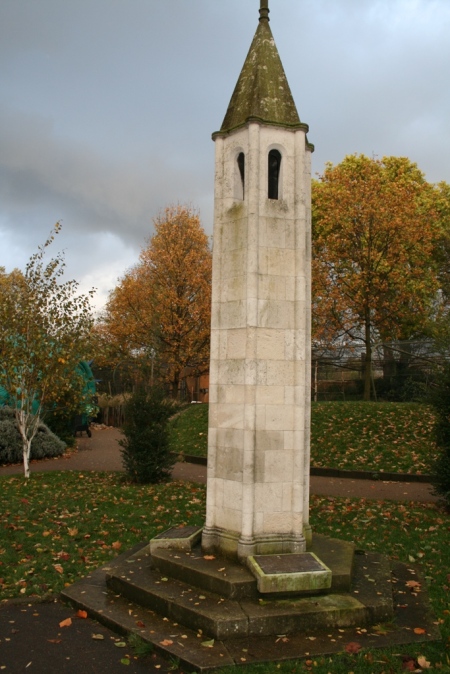
Autumn colours behind the ZSL war memorial, London Zoo, November 2010 (Photo: Kate Oliver, ZSL Education)
Reading the names means these men are not forgotten.
Researching and reading a few of these background stories puts a more personal face on the scale of the losses, especially in the First World War, adding to what is on the www.cwgc.org site. Many thanks to Kate Oliver at ZSL who photographed the very well polished brass name plates.
ZSL London Zoo is working on an exhibition about these men and ‘The Zoo’ in WW1 to mark the 1914-18 centenary.
ZSL London Zoo war memorial
The Zoological Society of London
In memory of employees who were killed on active service in the Great War 1914-1919
Casualties are listed on the plaque in order of date of death and /or using the plaque details.
29.9.1915 Henry D Munro 4 Middlesex Regt ZSL Keeper
The unnamed “Keeper with The King Penguin”.
On the CWGC site and UK Soldiers Died in the Great War 1914-1919 database (1921), ZSL Keeper Henry or Harry Munro is registered as born in the St. Pancras Middlesex area and enlisting in the Army in Camden Town, Middlesex (the area near Regent’s Park Zoo).
Quite old in military terms, he appears to have volunteered or enlisted most likely in the early months of the war in Autumn / Winter 1914; conscription was only introduced in 1916. Munro served as Private G/2197 with the local regiment, 4th Battalion, The Middlesex Regiment (Duke of Cambridge’s Own).
Henry (Albert) Munro served in France and Flanders from 3rd January 1915 and was killed aged 39 in action on 29th September 1915. He has no known grave, being remembered on panel 49-51 amongst the 54,000 Commonwealth casualties of 1914 to 1917 on the Ypres (Menin Gate) Memorial in Flanders, Belgium. His death occurred a few days after September 25th saw the British first use of poison gas during the Battle of Loos after the first German use in April. The Battle of Loos took place alongside the French and Allied offensive in Artois and Champagne, followed the Second Battle of Ypres (22 April to May 5th 1915 onwards).
Henry Munro served from 31 August 1914 to 5 January 1915 in Britain, and then with the BEF (British Expeditionary Force) from the 6th January 1915 in France until his death on 29th September 1915 (Military History Sheet, Army Service Papers (“Burnt Documents”). This early service gained him the 1915 star, along with the standard Victory and British medal.
‘Harry’ Munro is listed in Golden Days, an old book of London Zoo photographs (ZSL image C-38771X?) as being involved in “the army, airships and anti-submarine patrols”. Nothing more appears on his service papers about this air and sea activity. I have little more information on this intriguing entry at present but the London Zoo typed staff lists of men of active service list him as ‘missing’ well into their 1917 Daily Occurence Book records. Many of the identifications of staff in the photographs in Golden Days will be from the memory of long retired staff.
Harry Munro is pictured with a King penguin but is listed on his staff record card as a keeper of sea lions. Intriguingly, several London Zoo histories list secret and unsuccessful attempts made early in the war to track submarines using trained seals or sealions. Airships were also used for U-boat spotting. I wonder if and how Harry was involved?
On the Mary Evans Picture blog “London Zoo at War” there features an interesting reprinted picture from the Mary Evans archive: “In March 1915, The Illustrated Sporting & Dramatic News featured this picture, showing a zookeeper in khaki, returning to his place of work while on leave to visit the seals, and to feed them some fish in what would be a rather charming publicity photograph.” This soldier, according to Adrian Taylor at ZSL, who worked on the London Zoo WW1 centenary exhibition, is George Graves, one of Munro’s keeper colleagues in khaki who survived the war and returned to work at London Zoo.
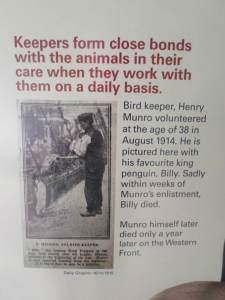
Henry Munro Panel section by Adrian Taylor from The Zoo At War exhibition at ZSL London Zoo, WW1 centenary 2014.
Henry Munro was born in Clerkenwell, in 1876, not far from Regent’s Park zoo (London 1891 census RG12/377) and may have worked initially as a Farrier / Smith, aged 15. His family of father William J Munro, a Southwark born Printer aged 42 and mother Eliza aged 43 (born Clerkenwell) were living in 3 Lucey Road, (Bermondsey, St James, Southwark?)
Private Henry or Harry Munro was 39 when he died, married with children. He had married (Ada) Florence Edge on 20th November 1899. They had three children, born or registered in Camden Town near the zoo) by the time he was killed on active service. Hilda was 13 (born 29th March 1901), Albert Charles was 9 (born 5th June 1906) and Elsie, 7 (born 17 August 1908), all living at 113 Huddleston Road, Tufnell Park to the north of the zoo in London in 1915. Interestingly, maps list Regent’s Park as having a barracks on Albany street (A4201).
We covered more of Munro’s story on the centenary of his death 29 September 2015:
18.03.1916 William Bodman 6th Btn, East Kent Regt, Private ZSL Helper.
Helpers were the most junior in the keeper ranks, new or younger staff who had not attained full keeper rank.
Private L/7736 William Bodman 6th Btn, East Kent Regt (Buffs) ZSL Helper, aged 29 (born c. 1887)is commemorated on the Loos Memorial, panel 15 to 19, having no known grave, one of over 20,000 men recorded on this memorial to the missing in this area.
Currently no Army Service or Pension records have so far been found but his medal records show that in addition to the standard Victory and British war medal he earned a 1914 star, entering service / theatre of war 7th September 1914. Born in Clerkenwell (Middlesex, London ), William was normally resident in St. John’s Wood (Middlesex, London) not far from Regent’s Park. He enlisted in Stratford, (Essex, London) and may well have been a former soldier or Territorial Army to have entered overseas service so quickly.
Conscription, Lord Derby and Knowsley
In March 1916, conscription came into force in Britain. The first Military Service Bill was passed in Britain on January 25th , introducing conscription for single men between 18 to 41 with effect from March. On May 16th, the Second Military Service Bill was passed in Britain, extending conscription to married men over 18 to 41; this age range was later extended.
Previously volunteering in 1914 and 1915 had brought enough recruits. From 1915, Lord Derby’s scheme encouraged men to ‘attest’ their willingness to serve when the appropriate time came. Several of the London Zoo staff have these Derby Scheme papers in their National Archives entries. Lord Derby was part of the Stanley family, the owners of Knowsley Hall, home to a famous Victorian menagerie painted by Edward Lear as old as London Zoo itself. Knowsley has run the Knowsley Safari Park on its estate since 1971. Lord Derby encouraged his gardens staff to enlist and set up the Derby Scheme, becoming Secretary of State for War from 1916-18. But that is another story for a different blog post.
10.07.1916 Albert A Dermott 13th Btn. Rifle Brigade, Rifleman ZSL Messenger
Rifleman S/4504 Albert Arthur Dermott, 13th Btn. Rifle Brigade, (The Prince Consort’s Own) ZSL Messenger, aged 22, was killed on the Somme and has no known grave, being listed on the Thiepval Memorial.
Dermott is listed amongst the 72,000 names on the strangely shaped Thiepval memorial to the missing dead who have no known grave of the Somme battles of 1916-18. The memorial by Lutyens which sits high on a hill overlooking the killing fields of France is nicknamed by some the ‘elephant’, with its howdah or passengers on a zoo elephant ride.
According to CWGC records, Albert Arthur Dermott was the son of Frederick John Dermott and (Margaret) Rachel Frances Dermott (nee Creswell) of 2 Queen’s Road, Dalston, Middlesex, London. After his mother Rachel’s death, Dermott’s father Frederick remarried a Louisa Archer.
Albert was born in Islington, Middlesex, London on 25th April 1894 and was resident and enlisted in Marylebone, Middlesex. According to his medal records, he entered service overseas on 29 July 1915 (earning a 1915 star) and was killed just under a year later. He would have been only just past 22 years old when he was killed in action.
Dermott is listed on the Thiepval project database The following biographical information was researched by Ken and Pam Linge for Dermott’s database entry, culled from Census information – Dermott was the youngest of five children. His siblings were Rachel Margaret Dermott (b.1883), Alice Louisa Dermott (b. 1885), Frederick John Dermott (b.1887), Edith Dermott (b. 1891). The young Albert was educated at Shap Street School, Hackney from 9th September 1901.
15.9.1916 Arthur G Whybrow 2547, 19 Bn. County of London Regt , ZSL Helper.
Whybrow joined up on 4 September 1914 and went to France on 8th March 1915. He was killed during the Somme battles, probably in the clearance of High Wood by 47th (London) Division, 15 September 1916.
Born around 1891, Arthur Whybrow worked first as a Domestic Gardener (like his father John) before joining London Zoo as a keeper (noted on his marriage certificate in July 1913). He married Daisy Sutliff and they had a child, Winifred Daisy Whybrow born 1913/14. Daisy remarried after Arthur’s death, a Mr Goodard in mid 1919.
Whybrow is one of the 101 men identified in an individual grave 1A.A.10” title=”A G Whybrow headstone picture” target=”_blank”> at London Cemetery and Extension, Longueval. High Wood was fiercely fought over during the Battle of the Somme until cleared by 47th (London) Division on 15 September 1916 when Whybrow was killed. The original ‘London’ Cemetery at High Wood was begun when 47 men of the 47th Division were buried in a large shell hole on 18 and 21 September 1916. Other burials were added later, mainly of officers and men of the 47th Division who died like Arthur Whybrow on 15 September 1916. His gravestone looks slightly more squeezed in next to others than normal as if this is a mass grave.

A G Whybrow lies buried with many others of his London Regiment who died on the same day. Source: CWGC
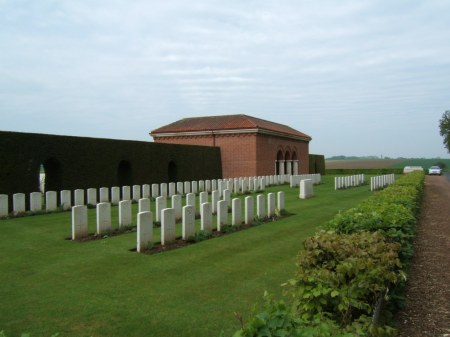
Whybrow’s grave lies in a short row (I think) just behind the Special white central memorial stone near the entrance, London Cemetery , Longueval. Image: cwgc.org website
At the Armistice Whybrow’s cemetery contained 101 graves. The cemetery was then greatly enlarged when remains were brought in from the surrounding battlefields, but the original battlefield cemetery of London Regiment soldiers where Whybrow is buried is preserved intact within the larger cemetery, now know as the London Cemetery and Extension. The cemetery, one of five in the immediate vicinity of Longueval which together contain more than 15,000 graves, is the third largest cemetery on the Somme with 3,873 First World War burials, 3,114 of them unidentified.

The flat landscape and scale of the Somme cemeteries around Longueval can clearly be seen here. Image: London Cemetery, Longueval cwgc.org website
Listed on CWGC website as the son of John and Louisa Whybrow, of Hampstead, London and husband of Daisy Goodard (formerly Whybrow), of 193, Junction Rd., Highgate, London.
05.10.1916 Gerald P Patterson 19th County of London Regt ZSL Helper
The 19 County of London Regiment may be an error or his first regiment. This is likely to be 43689 Private Gerald Phillips Patterson of the 8th Battalion, Norfolk Regiment was killed on 5th October 1916 during the Somme fighting. He is buried in an individual grave XI. C. 4. in Connaught Cemetery, Thiepval, Somme, France. There is no family inscription on his headstone, pictured on the TWGPP website. .
The life of his battalion during the Somme battles is well set out in the Somme school visit site http://www.schoolhistory.co.uk/forum/index.php?app=core&module=attach§ion=attach&attach_id=2956
It is likely that Patterson went into action with the Norfolks on the 1st of July 1916, the first day of the Somme as part of the 18th (Eastern) Division as part of K2, Kitchener’s 2nd Army Group of New Army volunteers. Patterson was most likely killed during the attack and capture of the Schwaben Redoubt on the 5th October 1916. The next day his battalion went back for rest out of the line.
Many of Patterson’s 8th Norfolk battalion who were killed and whose bodies or graves were not found are remembered on the nearby Thiepval Memorial, alongside other ZSL staff like Albert Dermott.

ZSL Helper G.P. Patterson’s grave lies amongst those to the right of the Cross of Sacrifice, Connaught Cemetery, Thiepval, Somme. Image: cwgc.org website
Patterson is listed on the ZSL memorial plaque as 19th County of London Regiment; along with several other ZSL staff he enlisted locally in Camden Town, Middlesex, close to the London Zoo. Later he must have transferred to his County regiment the Norfolks as he was born in Great Yarmouth like his parents and siblings. His father was a school attendance officer and Patterson was the youngest of 7 brothers and sisters, all born in Great Yarmouth. On leaving school, the 1911 census lists him as an Auctioneer’s Articled Pupil, before becoming a ZSL Helper (a junior or trainee keeper rank).
There are now 1,268 Commonwealth servicemen of the First World War buried or commemorated in the Connaught cemetery. The vast majority of the burials are those of officers and men who died in the summer and autumn of 1916 battles of the Somme. Half of the burials are unidentified, many brought in from smaller cemeteries around the Somme battlefields area.
23.10.1916 William Dexter Kings Royal Rifles, Rifleman ZSL Keeper
Rifleman S/19841 William Dexter was a married keeper enlisted in the 2nd Battalion, Rifle Brigade, The Prince Consort’s Own, who died on or around 23 October 1916 aged 31. Dexter is buried in an individual grave XVIII. J. 5. at Bienvillers Cemetery, near Arras,and the Ancre, France.
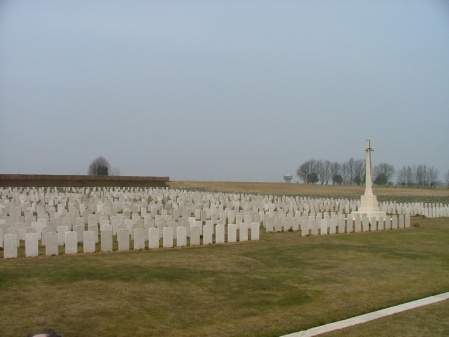
Dexter is buried in the rows of graves to the left of the Cross of Sacrifice at Bienvillers Military Cemetery. Image http://www.cwgc.org
According to his granddaughter Nova Jones whom I met at London Zoo in March 2014, William Dexter came from a zoo family of several generations. The daughter of William’s daughter Dora, Nova has found in time for ZSL’s wartime centenary exhibition a photograph of William Dexter in uniform with Rifles cap badge and has confirmed with the Royal Greenjackets Museum that “William as a Rifleman (Service no. S/19841) served with the 2nd Bn. Rifle Brigade (The Prince Consort’s Own) during the First World War.”

Burial details of how William Dexter was identified from the regimental number on his boot . Source: CWGC
William Dexter was listed on his Army Medical Form as a “Keeper at Zoo”, 5 foot 5 ½ inches, Physical development ‘Good’. His father Robert Dexter had been employed at the zoo from the 1860s onwards. After working as a labourer and painter, William obtained employment ‘as worth keeping’ in 1908, rising to Junior Keeper of Ostriches in 1913 before joining up. The 31-year-old father of four children, enlisted in the Rifle Brigade in December 1915.
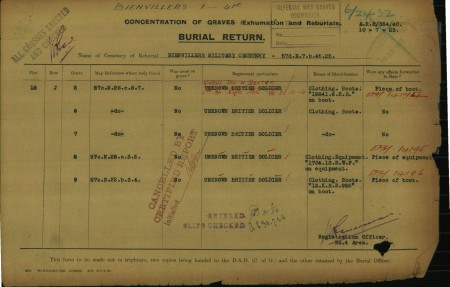
A portion of boot with his numbering appears to be all that helped identify William Dexter and prevent him being buried like all the others as “Unknown British Soldier”
After barely one month serving in France he was listed as “Missing – accepted as having died on or since 23 October 1916”. Although war service and pension records are difficult sometimes to decipher, “A portion of boot” was seemingly all that was left to identify his missing body , along with posthumous medals and a pension, for official recognition and return by the authorities of Keeper Dexter to his wife and four children.
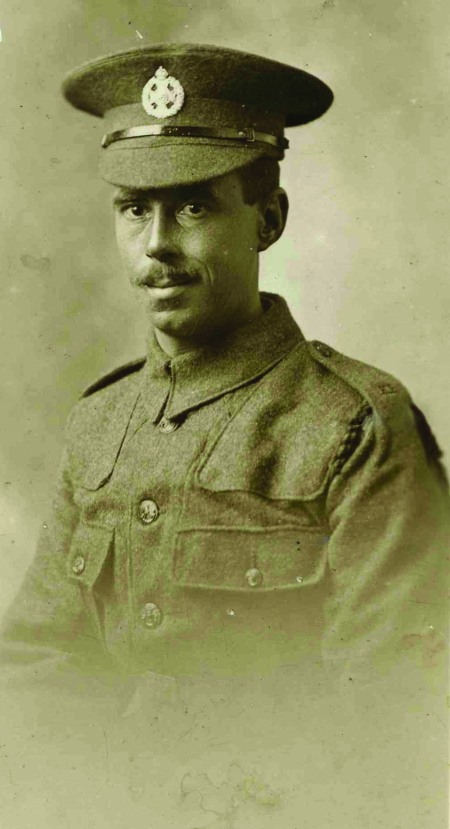
William Dexter, ZSL London Zoo keeper killed in WW1
(Photo: Courtesy of Nova Jones, digital clean up Adrian Taylor ZSL)
It is quite rare amongst the photographs in zoo archives such as ZSL London Zoo to find the name of the staff alongside the animal pictured. A photo exists in the ZSL archives of Keeper William Dexter with an Ostrich cart giving rides in 1913, pictured in John Edwards’ book of London Zoo in Old Photographs, now in a new larger 2nd edition. I was lucky enough to meet Dexter’s granddaughter Nova Jones at the London Zoo War memorial, when she dropped of this photo of William Dexter in uniform for the London Zoo’s WW1 exhibition.
Later in the ZSL photo archive, his own son Edward William appears as ‘Reptile Keeper Dexter’ in a 1930s photograph. Private William Dexter’s son, ‘Ted’ was born in 1914, the year that the First World War broke out. According to his granddaughter after serving in Civil Defence, training men as stretcher bearers at a St. Pancras ARP depot, he served in the Royal Fusiliers fighting in Italy in World War Two. After the war Ted became Head Reptile Keeper, only to die trying to save two contractors from a carbon dioxide filled pit at the zoo in a tragic accident at the zoo in December 1960. A posthumous award of gallantry was added to the other Dexter family medals.
According to Soldiers Died in the Great War listing, William Dexter was born and resident in Regent’s Park. According to his WW1 Descriptive Report on Enlistment (Army Service Papers / Army Pension records, Burnt Documents), William Dexter married Sarah Elizabeth Dexter (nee Snuggs) in South Hampstead on 9th September 1909.
CWGC listing: Son of Robert and Mary Ann Dexter; husband of Sarah Elizabeth Dexter, of 12, Manley St., Regent’s Park, London.
They had four children born in St. Pancras by the time William was killed in October 1916: Ena Mary, 6 (born 2nd October 1910), Dora Florence, aged 4 (born 20th March 1912), the future zoo keeper Edward William, aged 2 (born 12 February 1914) and Joan Elsie, aged 1 (born 5th October 1915).
The inscription on Dexter’s headstone reads: “Always living in the hearts of those who loved him” and the headstone can be seen on the TWGPP website.
09.04.1917 Robert Jones 9 Royal Fusiliers ZSL Gardener
There are two current possibilities for this name,awaiting research:
Private GS/60595 Robert Jones, 9th Battalion Royal Fusiliers was born in Islington or Highgate, Middlesex around 1881 and was married to Bertha Lewin of Abbots Ripton, Huntingdon around 1905 / 1906 in Camden / Highgate. He was formerly listed as 23358 6th Middlesex Regiment, having enlisted in Harringay and been resident in Highgate. On the 1901 census he is listed as a Gardener (not domestic) and in 1911 as a Nursery Gardener.
On the CWGC website he is listed as the husband of Bertha Jones of 22 Caxton Street, Little Bowden, Market Harborough. This Robert Jones died of wounds on 7 April 1917 (two days different from the ZSL dates on the war memorial plaque) and is buried in Faubourg D’Amiens cemetery in Arras. His headstone (photographed on the TWGPP website) bears the family inscription from his wife reads: “Thou art not far from us who love thee well”
The other possibility with the same date as the ZSL war memorial plaque is 472712, 1st / 12th Btn. London Regiment (The Rangers), aged 31 buried in Individual grave A2 , Gouy-en Artois Cemetery, killed or died of wounds on the first day of the Battle of Arras 1917. The CWGC lists him as the brother of Mrs. Clara Shafer, of 37, Cornwallis Rd., Walthamstow, London. He was born in 1886 in Grays, Essex and enlisted in Plaistow. He appears on the 1911 census not to have been a gardener but a coal porter in a gas works.
This coal porter seems less likely to be the ‘Robert Jones ZSL gardener’ but without surviving service or pension papers for either one that I have found so far, even his ZSL staff record cards give few clues as to which one is the ZSL Gardener. Both deserve to be remembered.

472712 Private Robert Jones’ gravestone is just behind the Cross of Sacrifice in this picture of the tiny Gouy en Artois Cemetery near Arras. Image: cwgc.org
Gouy-en-Artois where one Robert Jones is buried is a village 15 kilometres south-west of Arras. The cemetery extension was made in April 1917 at the time of the Allied advance from Arras. It contains 44 Commonwealth burials of the First World War.
21.4.1917 Henry George Jesse Peavot Honourable Artillery Co ZSL Librarian
B Co. 1st Btn, aged 35. Killed during Battle of Arras period, No known grave, listed on Arras Memorial. Married.
Henry George Jesse Peavot, a 35 year old ZSL Librarian served in B Company, 1st Battalion, Honourable Artillery Company and died on 21st April 1917. He has no known grave and his name is listed amongst the 35,000 missing men listed on the Arras Memorial alone.
Like many of these zoo staff, Peavot was married; his widow Maud or Maude Pravot as far as I can discover never remarried and lived to mourn his loss for almost seven decades until 1985. They had one child. Previously a ZSL typist, Maude kept in touch with ZSL for many years, a file of personal correspondence in the ZSL Archive appears to continue from 1917 to about 1932 and is likely to be pension related. The legacy of absence and injury from both world wars is still ongoing or at least within our working and living memory, in families and professions such as zoo keeping across Europe.
A former colleague of Peavot from the ZSL Library, Edwin Ephraim Riseley was also killed a few months later in August 1917, commemorated at the Linnean Society Library where he worked after leaving London Zoo – see our Linnean Society Roll of Honour blog post.

ZSL gardener Albert Staniford would no doubt in life have appreciated the efforts of the Commonwealth War Graves gardeners in this beautifully maintained cemetery where he lies buried, Maroc Cemetery, Grenay, France. Image: cwgc.org website
23.9.1917 Albert Staniford Royal Field / Garrison Artillery ZSL Gardener
174234 216 Siege Battery. RGA Individual grave, Maroc British cemetery, Grenay, France. Period of Third Battle of Ypres / Passchendaele, July to November 1917.
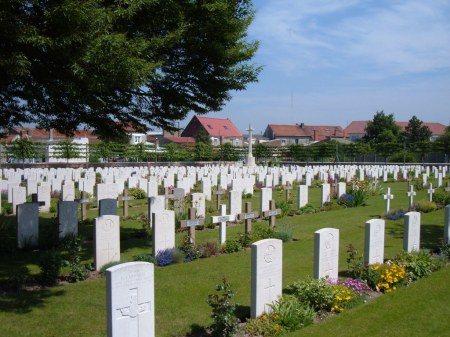
French and German burials lie amidst the British graves, Maroc Cemetery, Grenay, France. Image: cwgc.org.uk
ZSL gardener Albert Staniford was born in 1893 in the Regent’s Park area, the son of Annie and Alfred, who was also a gardener. His medal record card states that he served in both the Royal Field Artillery as 17692 and 216 Siege Battery,Royal Garrison Artillery as 174234 Gunner Staniford. He embarked for France on 31 August 1915, entitling him to a 1915 star, alongside the Victory and British War Medals. He served in France for two years before his death in September 1917, only three months after his marriage in London on June 6 1917 to Esther Amelia Barrs (b. 1896).The CWGC listing has no family inscription on the headstone.
Staniford is buried in Maroc British Cemetery which is located in the village of Grenay, about 15 kilometres south-east of Bethune. During the greater part of the war it was a front-line cemetery used by fighting units and field ambulances. Plot II was begun in April 1917 by the 46th (North Midland) Division. Maroc British Cemetery now contains 1,379 Commonwealth burials and commemorations of the First World War.
03.10.1917 William Perkins Royal Garrison Artillery ZSL Keeper
115806, Bombardier, 233rd Siege Battery. Born in 1878 in Lifton in Devon to a gardener / labourer father Thomas and Cornish mother Emma Jane. Listed as a keeper on his wedding certificate, he married Lucy Elizabeth MacGregor in London in 23 August 1914 and lived in Eton Street, NW London (near other keepers).
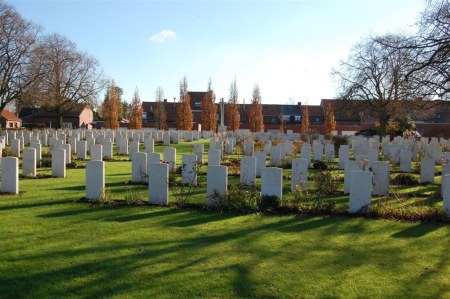
ZSL Keeper William Perkins is buried in Belgian Battery Corner Cemetery , Ypres, Belgium. Image: cwgc.org website
Perkins is buried in an individual plot, Belgian Battery Corner Cemetery, Belgium. This appropriately named cemetery for an artillery soldier occupies a site at a road junction where three batteries of Belgian artillery were positioned in 1915. The cemetery was begun by the 8th Division in June 1917 after the Battle of Messines and it was used until October 1918, largely for burials from a dressing station in a cottage near by. Almost half of the graves are of casualties who belonged, or were attached, to artillery units. The cemetery was designed by Sir Edwin Lutyens.
19.1.1918 ?Alfred L? Day 2 Rifle Brigade ZSL Helper
Currently a bit of a mystery! The most likely casualty appears at first to be Alfred Lomas Day, S/20305 2nd Battalion, Rifle Brigade, killed 29 November 1917 and buried at individual grave 1841, Rethel French National Cemetery, Ardennes, France. Rethel was in German hands from the early days of the First World War until 6 November 1918. Rethel French National Cemetery contains the graves of almost 3,000 French soldiers. The Commonwealth Plot, in the east part of the cemetery, contains 110 graves. The French National Cemetery also contains Russian and Rumanian graves. 19.1.1918 may be a wrong date transcribed on a well polished brass plate.
Searching through the ZSL staff records cards, there is mention of an R. Day or Richard Day who died as a POW in German Hands on 19 January 1918. I have not yet located service records for this R.Day. On electoral rolls, he lived in the same road as an Alfred Lomas Day. Maybe the two men have become confused, A Day looking a little like R Day in the handwritten staff listing in the Daily Occurences Book. Maybe thy re one and the same man. Again,another one for further research.
10.9.1918 Charles William Dare County of London Regiment ZSL Helper,
245116, London Regt (Royal Fusiliers), remembered on the Vis-en-Artois memorial having no known grave.

Charles Dare has no known grave and is remembered on the Vis-en-Artois memorial.
Image: http://www.cwgc.org
This Memorial bears the names of over 9,000 men who fell in the period from 8 August 1918 to the date of the Armistice in the Advance to Victory in Picardy and Artois, between the Somme and Loos, and who have no known grave. Britain lost more men in 1918 than it did in the whole of the Second World War.
10.9.1918 Charles William Dare County of London Regt ZSL Helper,
originally enlisted as 2965 or 610564 19th London Regiment, he served also as Private 245116, 2nd (City of London) Battalion (Royal Fusiliers). He was killed on active service, aged 20 and is listed on the Vis-en-Artois memorial, one of 9580 killed in this area in the “Advance to Victory” having no known grave.
Charles Dare was killed during period of the 100 days of the “Advance to Victory” (August to November / Armistice 1918). August 8th marked the beginning of the Battle of Amiens was known as the ‘Black Day’ of the German Army; on the 15th, British troops crossed the Ancre river and on the 30th, the Somme river. Advances carried on throughout September. The Armistice came two months after Charles Dare’s death on the 11th November 1918.
Charles Dare was born and lived in St. Pancras between April and June 1898 and enlisted in Camden Town. He had an older sister, Lilian E Dare, two years older, also born in St. Pancras. His father Charles J Dare was a distiller’s clerk from Hereford, aged 38 in 1901 living at 16 Eton Street, St. Pancras parish / borough (London 1901 census RG 13/133). His mother Mary A Dare, 37, was born in Lugwardine, Hereford.
A Helper in ZSL staff terms is a junior or trainee member of staff before they become a Junior then Senior Keeper.
Interestingly ZSL keeper William Dexter lived nearby at 9 Eton Street, Regent’s Park on enlistment. Many of the staff lived nearby each other and the Zoo on the same roads in Camden and surrounding areas. By the time his pension was awarded to his widow, Mrs. Dexter had moved to 12 Manley Street, Regent’s Park with William’s parents and his four children.
“TILL THE RED WAR GLEAM LIKE A DIM RED ROSE /
LOST IN THE GARDEN OF THE SONS OF TIME”
ZSL war memorial verse from James Elroy Flecker, “Burial In England”
Upadte on research March 2014
I have previously written about the WW2 casualties from London Zoo and Whipsnade on a separate blog post.
Throughout the WW1 centenary 2014 – 2019, I will be researching their backgrounds through the census, National Archives, military service records and ZSL London Zoo archive staff records. I have spoken to relatives engaged in family history research into some of these men such as William Dexter and Henry Peavot, along with former London Zoo keepers like Les Bird, who has visited many of the ZSL graves. There are still many questions to be answered.
There are in all possibility sadly many more names to add to the known wartime casualty lists from zoos, botanic gardens and aquariums worldwide as our World War Zoo gardens research project continues. I would be interested to hear of any more names or memorials you know of. I am very interested in hearing from anyone who has further information about these men or of other wartime zoo, aquarium or botanic garden related gravestones or rolls of honour.
So buy a poppy (there’s usually a box in the Newquay Zoo office or shop if you’re visiting) and spare a thought for these men and their families on Remembrance Sunday, and also for the many people not listed who were affected by their war service, men and women not just from Britain but all over the world.
And then enjoy the noisy peace of the zoo gardens or wherever you find yourself …
Tags: Armistice day, London Zoo, Newquay Zoo, poppy day, Remembrance Sunday, war memorials, WW1 centenary, zoo, zoo history, ZSL



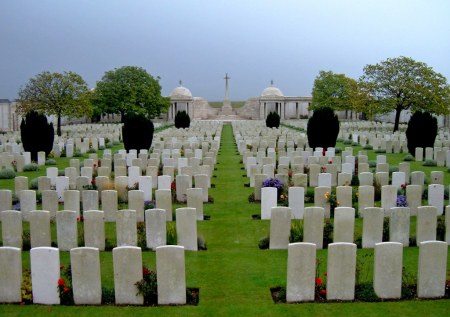

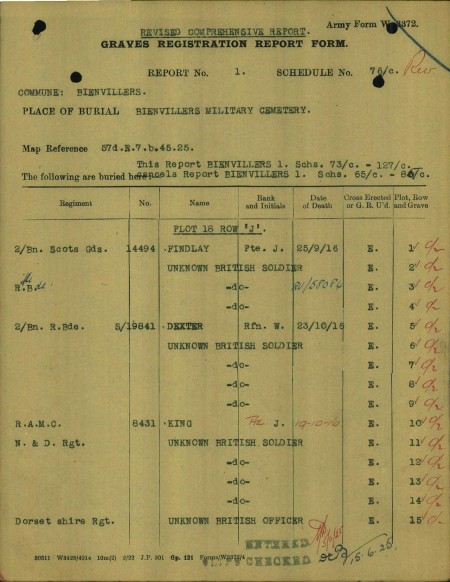

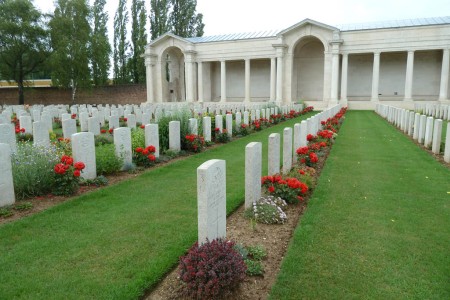
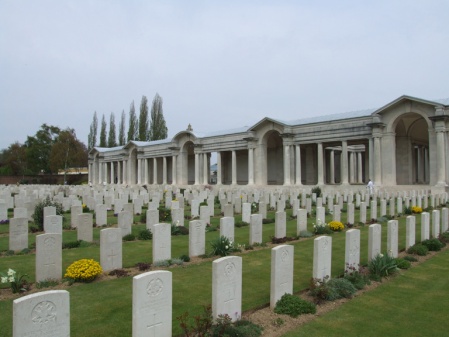


January 29, 2014 at 9:05 pm |
[…] of the 1914 centenary. We’ve already blogposted about the war memorials at Kew Gardens and London Zoo – see previous […]
LikeLike
July 30, 2014 at 1:06 pm |
[…] https://worldwarzoogardener1939.wordpress.com/2013/11/04/remembering-lost-wartime-staff-of-zsl-london… […]
LikeLike
August 3, 2014 at 10:41 am |
[…] https://worldwarzoogardener1939.wordpress.com/2013/11/04/remembering-lost-wartime-staff-of-zsl-london… […]
LikeLike
November 5, 2015 at 9:15 am |
[…] London Zoo staff will be remembering Harry Munro and other lost colleagues of WW1 and WW2 during the Armistice / Remembrance silences this November: https://worldwarzoogardener1939.wordpress.com/2013/11/04/remembering-lost-wartime-staff-of-zsl-londo… […]
LikeLike
November 7, 2015 at 12:12 pm |
[…] https://worldwarzoogardener1939.wordpress.com/2013/11/04/remembering-lost-wartime-staff-of-zsl-londo… […]
LikeLike
April 25, 2016 at 9:42 am |
My grandfather was Alfred Lomas Day and my mother told me before she died that he worked at London Zoo and died in a POW camp in Germany and has his name on the memorial in the Zoo.
He was in the 2nd Battalion Rifle Brigade. She also told me he starved to death in the camp.
After his death she and her brother and sister went into an war orphanage as there grandad couldn’t manage.
Pauline Bowden. Maiden name. Pauline Hawkins
LikeLike
May 17, 2016 at 7:52 pm |
Dear Pauline
Many many thanks for your comment and apologies for the slow reply – I will add this comment to the blogpost and follow the story up. From what I recall there was / is some confusion over names and dates and details for A. L. Day whose name does appear on the well maintained ZSL London Zoo staff war memorial. The current blog entry mentions POW camp entry in the ZSL staff record cards. I shall look into this again:
“19.1.1918 ?Alfred L? Day 2 Rifle Brigade ZSL Helper
Currently a bit of a mystery! The most likely casualty appears at first to be Alfred Lomas Day, S/20305 2nd Battalion, Rifle Brigade, killed 29 November 1917 and buried at individual grave 1841, Rethel French National Cemetery, Ardennes, France. Rethel was in German hands from the early days of the First World War until 6 November 1918. Rethel French National Cemetery contains the graves of almost 3,000 French soldiers. The Commonwealth Plot, in the east part of the cemetery, contains 110 graves. The French National Cemetery also contains Russian and Rumanian graves. 19.1.1918 may be a wrong date transcribed on a well polished brass plate.
Searching through the ZSL staff records cards, there is mention of an R. Day or Richard Day who “died as a POW in German Hands on 19 January 1918″. I have not yet located army service records for this R.Day. On electoral rolls, he lived in the same road as an Alfred Lomas Day. Maybe the two men have become confused, A Day looking a little like R Day in the handwritten staff listing in the Daily Occurences Book? Maybe they are one and the same man? Again,another one for further research.”
Many thanks for your reply and I will see what I can find out in the next few months. Mark Norris, World War Zoo Gardens project, Newquay Zoo.
LikeLike
July 10, 2016 at 8:57 am |
[…] https://worldwarzoogardener1939.wordpress.com/2013/11/04/remembering-lost-wartime-staff-of-zsl-londo… […]
LikeLike
July 18, 2016 at 8:01 am |
[…] https://worldwarzoogardener1939.wordpress.com/2013/11/04/remembering-lost-wartime-staff-of-zsl-londo… […]
LikeLike